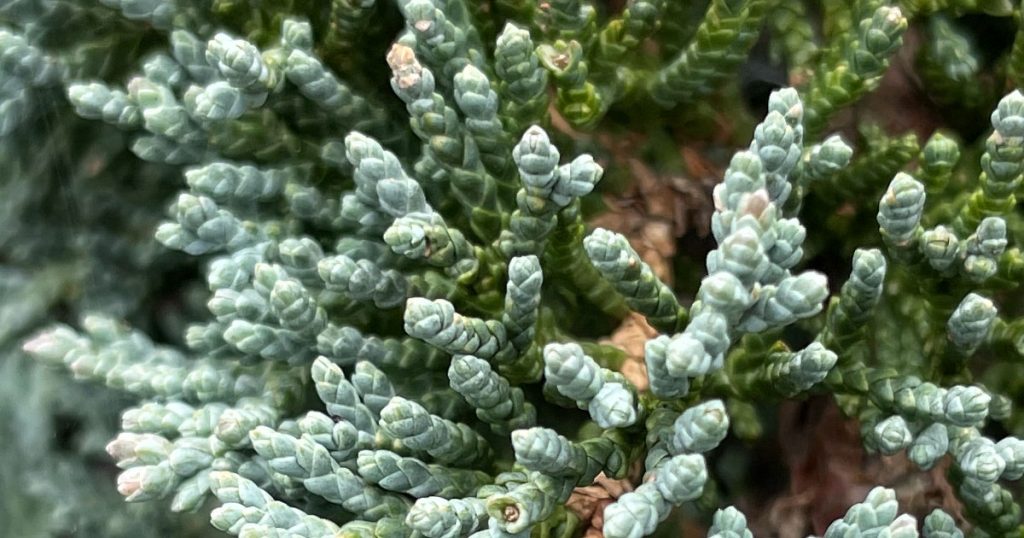Juniperus horizontalis is commonly called creeping juniper. It is found over a wide range from Alaska down to the Great Lakes. With such a wide range many different forms are available. Height, foliage colour and growth habit differ.

One of the most useful ground cover conifer varieties, it grows well in colder climates, however it is versatile and is regarded as hardy in USDA Zones 3 to 9
Where to Plant Juniperus horizontalis
An excellent choice for any well drained soil, and especially useful as a low maintenance ground cover in difficult situations.
Plant the creeping Juniper in early spring and make sure you provide some moisture through the first summer. A good layer of mulch can be helpful. This early planting gives the plant a chance to establish a strong root system before the heat of summer and then the first cold winter.
Not suited to areas subject to foot traffic, and Junipers do not like hard pruning so choose your planting position with this in mind.
And yes, you can plant some of the smaller and slower growing types in containers.
Juniperus horizontalis Varieties and Cultivars
- Juniperus horizontalis ‘Marcellus’
- Juniperus horizontalis ‘Blue Pygmy’ is a miniature form, excellent in rock gardens and crevice gardens. Extremely slow growing and a fascinating little plant.
- Juniperus horizontalis ‘Golden Carpet’
- Juniperus horizontalis ‘J.J. Hughes’
- Juniperus horizontalis ‘Icee Blue’
- Juniperus horizontalis ‘Lime Glow’
- Juniperus horizontalis ‘Douglasii
- Juniperus horizontalis ‘Wiltonii’ One of the best
- Juniperus horizontalis ‘Prince of Wales’ Around 6 inched tall but will spread to 3 – 6ft over time
- Juniperus horizontalis ‘Blue Chip’ – Excellent blue tones to the foliage, around 10 inches tall.Spreading form
- Juniperus horizontalis Glauca
Summary Detail
- Botanical Name – Juniperus horizontalis
- Common Name -Creeping Juniper
- Origins – Northern America
- USDA Zones – 6-9
- Position – Full sun to a little shade
- Soil – Free draining with good organic material.
- Height – To around 24 inches (.6m) depending on variety
- Spread – To around 4m
- Foliage – Medium to dark evergreen, shades of blue depending on variety
- Flowers – Insignificant, small berries can follow the flowers.
- Growth Rate – Slow to Moderate
- Frost tolerant – Yes
- Drought tolerant – Medium
- Deer tolerant – Yes, however they can trample new plants.

